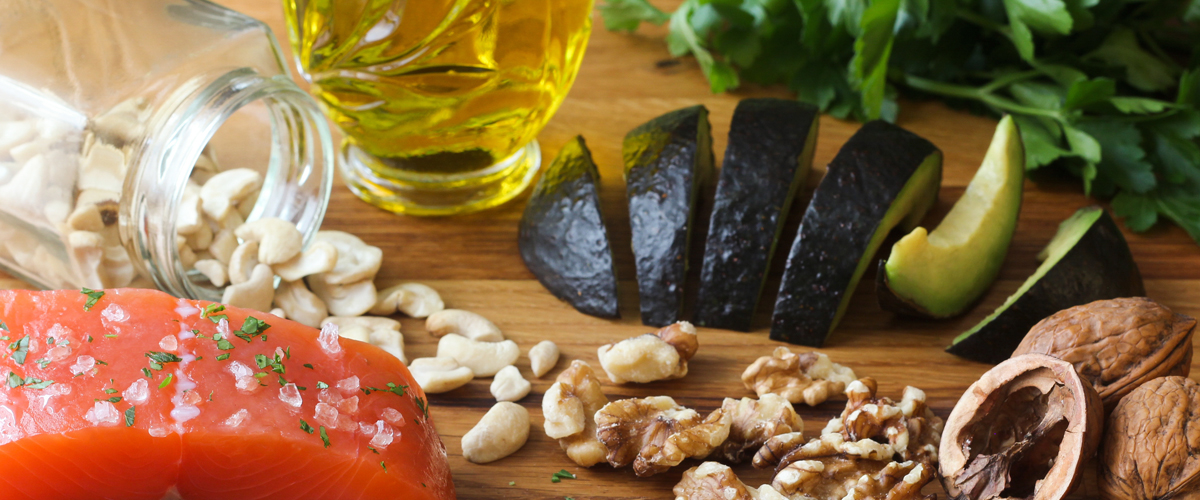What To Eat During Your Period: Foods That Help Reduce Cramps and Foods To Avoid
An expert explains what causes menstrual cramps and what you can eat to get relief.

Salty chips, a pint of ice cream, or a chocolate bar may be your go-to favorites to satisfy cravings during your period, but certain foods may do more harm than good when it comes to menstrual cramps.
Research suggests that diets high in inflammatory foods such as meat, oil, sugar, salt, caffeine, and alcohol can contribute to period cramps.
“The underlying cause of painful periods is thought to be inflammation, so anything that reduces it and improves blood flow to the uterus may help with symptoms during your cycle,” says Dr. Mary Rosser, an OB-GYN with NewYork-Presbyterian and Columbia. “A diet low in inflammatory foods can also reduce your overall risk of cardiovascular disease and cancer, in addition to supporting your menstrual health and overall health.”
Health Matters spoke with Dr. Rosser to understand what you need to know about menstrual pain — and what foods to eat and avoid.

Can diet help ease menstrual cramp pain?
Dr. Rosser: Up to 90% of people who menstruate can experience painful periods, or primary dysmenorrhea, with 15% suffering from severe symptoms that can impact their daily routine.
Cramps during a menstrual period can occur when the muscles and blood vessels of the uterus contract. During menstruation, the body produces hormone-like compounds called prostaglandins in the uterine lining, and the more prostaglandins, the greater the inflammation and cramp severity.
Reducing inflammation through medications like ibuprofen can help. A tip: taking them right at the start of your period, before the cramps set in, can help reduce painful menstrual symptoms because they inhibit the formation of prostaglandins (proteins made by the body that cause uterine contractions).
Sometimes, painful periods can be caused by underlying medical conditions like fibroids or endometriosis. Other conditions that can increase cramping with your period include infection, pelvic inflammatory disease, or a non-hormonal IUD that works by producing inflammation.
Ways to Reduce Inflammation
Diet: An anti-inflammatory diet rich in omega-3 fatty acids (found in cold-water fish like salmon and tuna, nuts such as walnuts and pecans, and seeds like chia seeds and flax seeds) can help with cramps and symptoms of premenstrual syndrome, especially when taken along with vitamin E supplements. The body cannot produce its own omega-3s, so it’s an important nutrient to get through food.
Heat: A warm bath or a warm compress placed on the lower abdomen or back can relax the uterine muscles and increase blood flow.
Exercise: Even though you may not feel up to exercise during your period, regular movement improves blood flow and brings more oxygen to the muscles, which can reduce inflammation.
Medication: Nonsteroidal anti-inflammatory drugs (NSAIDs), such as ibuprofen, or hormonal medication, such as contraceptive pills or IUDs, can effectively block pathways that produce large amounts of prostaglandins.
Healthy lifestyle: Eating healthy foods and staying active throughout your life, not just during your period, can help reduce inflammation in your body overall.
Can diet help ease menstrual cramp pain?
What seems to make a difference is an anti-inflammatory diet that helps reduce the production of prostaglandins and certain proteins in the body.
The goal is to have a balance of the omega-6 and omega-3 fatty acids in what you consume. Omega-6 fatty acids, which can be found in vegetable oils like soybean or corn oil, and processed foods that contain them, are associated with inflammation and can concentrate in uterine muscles and the endometrium, while omega-3 fatty acids, which are found in fish and nuts, have more anti-inflammatory properties.
Generally, Western diets tend to be much higher in omega-6 fatty acids , while a Mediterranean-style diet favors omega-3 fatty acids. B-complex vitamins such as B6 and B1 can also help with menstrual pain, as well as Vitamin D.
There is also strong data that shows ginger – whether in raw, supplement, or tea form – is effective in reducing intensity and duration of menstrual pain.
What causes food cravings during a period?
Food cravings can occur during the menstrual cycle due to fluctuating hormone levels. A desire for sweet or salty snacks can be your body’s way of increasing short-term energy.
Healthy ways to indulge include foods that contain complex carbohydrates, like trail mix, smoothies, fruit and yogurt, and dark chocolate.
While grabbing a store-bought treat might be tempting, you can swap highly processed, high-sugar baked goods with your own healthy alternatives at home. It doesn’t have to be expensive or inaccessible. With a little planning, you can bake your own snacks to help satisfy your sweet tooth, using bananas or applesauce as a substitute for oils.

When is it time to see a doctor about cramps?
It’s important to seek care if your periods are painful and interfere with your normal activities. Some indicators that it may be worth talking to your doctor or women’s health specialist:
- Heat or pain relievers are not working over a three-month time frame.
- Pain levels cause you to miss school or work, or prevent you from spending time with friends or going for a walk.
- You get your period more often than every 21 days or less often than every 35 days, consistently.
- The bleeding lasts more than seven days, or you’re going through a sanitary pad more than every one to two hours, consistently.
Additional Resources
Learn more about Women’s Health services at NewYork-Presbyterian.
